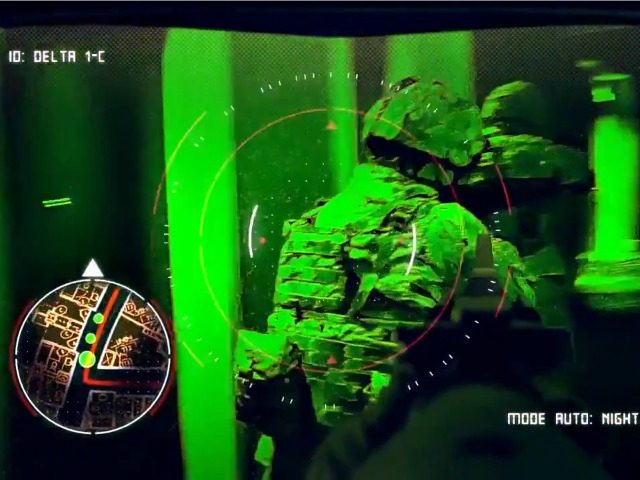“Tactical Augmented Reality” will provide a video game-like heads-up display to soldiers for superior situational awareness in the field.
It looks similar to a pair of night vision goggles but is far more. Tactical Augmented Reality (TAR) replaces both NVGs and GPS while offering real-time visual cues and vital data directly to soldiers.
Richard Nabors is an associate for strategic planning at U.S. Army Research, Development and Engineering Command’s Communications-Electronics Research, Development and Engineering Center, or CERDEC. He spoke about TAR at the Pentagon’s most recent Lab Day.
Nabors described the hand-held GPS system that most soldiers currently employ. It depends on geo-registering, a technology which allows soldiers to approximate their position if they have aligned an image they can observe with a reference image. The TAR system will handle this process automatically, allowing soldiers to more precisely know not only their own position but that of allied and enemy forces.
Staff Sgt. Ronald Geer, a counterterrorism non-commissioned officer at CERDEC’s Night Vision and Electronics Sensors Directorate, said soldiers won’t even need an independent GPS device at all. Instead of fiddling with the accessory, they will simply see a map overlaid on the terrain in front of them through a helmet-mounted eyepiece.
The TAR is connected to a tablet on their belt, as well as the thermal sight on their rifle. This creates a seamless HUD with more similarities to video games than to anything we’ve seen in military tech thus far. The soldier can use the gun as a deadly periscope, lifting it above cover without exposing themselves to danger.
The device can split its screen to give feedback from both the eyepiece and the sight, so a soldier can also look in multiple directions simultaneously. In fact, these visuals can be shared with other soldiers, giving the entire squad a level of collective intelligence that could change the entire way in which we approach tactical situations.
David Fellowes, an electronics engineer at CERDEC, expects the devices to both save lives and contribute to the success of future missions. It’s not hard to see why. They have been working since 2008 to develop the necessary miniaturization technology to allow for these highly-detailed dynamic visuals to fit on the one-inch display.
After nearly a decade of development, the U.S. Army is turning Ghost Recon into reality.
Follow Nate Church @Get2Church on Twitter for the latest news in gaming and technology, and snarky opinions on both.

COMMENTS
Please let us know if you're having issues with commenting.